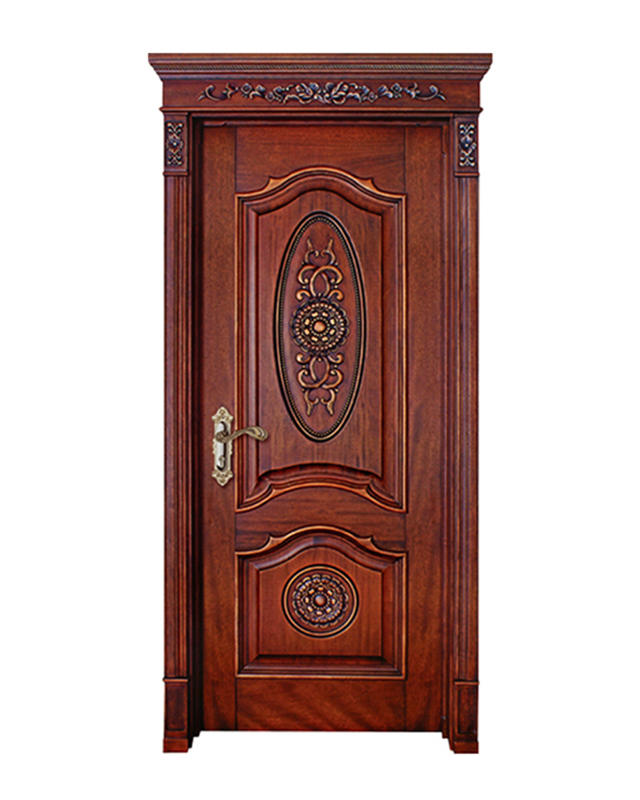At Wooden Door Factory, our expertise combines craftsmanship with precise engineering to deliver doors that stand the test of time. A wooden door is more than just a functional opening: it is an architectural expression, a thermal barrier and often a key design element. From the selection of premium wood to post-production inspection, every stage affects the quality, performance and aesthetics of a wooden door.
1. What Is a Wooden Door?
A wooden door is a solid or panel-constructed entry component primarily made from natural or engineered wood. It can be:
-
Solid core: Entirely made of hardwood or softwood—dense, durable, ideal for insulation.
-
Panel in frame: Traditional stile-and-rail structure with panels that allow for seasonal movement.
-
Engineered core: Includes honeycomb, MDF, or plywood cores—balances strength, stability, and cost.
Wooden doors may be:
-
Interior (lightweight, smooth finishes).
-
Exterior (thicker, weather‑resistant, often laminated).
-
Specialty (fire‑rated, sound‑proof, curved, or heavy-duty commercial).
Its characteristics—warmth, texture, customizability—make wooden doors popular across residential and commercial spaces. The manufacturing process preserves these benefits while ensuring durability and consistency.

2. Timber Selection and Sourcing
2.1 Choosing the Right Timber
Wood species determine the door’s structural and visual qualities:
-
Oak: Dense, resistant, attractive grain—common in high-end or rustic designs.
-
Maple: Light-colored, smooth, adapts well to stains.
-
Cherry: Red-brown tones, ideal for classic interior aesthetics.
-
Mahogany: Rich color, tight grain—frequently seen in premium exterior doors.
-
Pine/Fir: Cost-effective, good for painted or primed doors.
-
Engineered Wood: LVL cores, plywood panels—offers stability and consistency.
2.2 Sustainability and Certification
At Wooden Door Factory, we source timber certified by FSC or PEFC to reduce environmental impact. This also appeals to architects or clients pursuing LEED/WELL rating.
2.3 Grade and Moisture Content
Lumber grading affects aesthetic and performance:
| Grade | Description | Application |
|---|---|---|
| Select | Minimal knots, uniform grain | High-end, visible grain designs |
| No. 1 Common | Moderate knots/variation acceptable | Stained or painted doors |
Proper moisture content (6–8% interior, ~10–12% exterior) prevents warping or cracking post-construction.
3. Kiln-Drying and Acclimatization
Kiln-drying removes excess moisture quickly and uniformly, reducing internal stresses:
-
Wood is heated under controlled conditions.
-
Drying may take from days to weeks, depending on thickness.
-
Doors are then stored in rooms with consistent humidity and temperature to stabilize before machining begins.
This step is crucial for ensuring dimensional stability and avoiding issues later in the factory or installation environment.
4. Milling and Machining Components
4.1 Flattening and Jointing
Each board is jointed and planed—guaranteeing smooth, flat surfaces essential for quality glue bonding and consistent appearance.
4.2 Cutting Stiles and Rails
Stiles (vertical) and rails (horizontal) are cut accurately, often using CAD-driven saws, to ensure snug joints and a straight edge-to-edge placement.
4.3 Panel Machining
Panels are dimensioned with precision grooves to fit within frames for seasonal movement:
-
Raised panels provide decorative depth.
-
Flat panels offer smoothness for painting finishes.
-
Glazed panels require tight tolerances to accommodate glass and sealing components.
4.4 Mortising/Grooving and Core Inserts
CNC routers create clean mortises and grooves to accept panels or core materials (e.g., insulation, honeycomb). Core inserts enhance thermal, acoustic, or fire-rated performance.
5. Assembly and Gluing
5.1 Dry-Fit Checks
Before applying adhesive, door components are assembled dry to verify alignment and smooth performance.
5.2 Applying Adhesive
Common adhesives include:
-
PVA glue for standard doors.
-
Polyurethane for exterior doors for moisture resistance.
-
Phenol‑resorcinol for high-strength, waterproof joints.
5.3 Clamping and Pressing
Doors are kept in flat or barrel presses for even adhesive cure, typically 1–3 hours. Pressure is carefully calibrated to prevent squeezing out too much glue.
5.4 Glue Cleanup and Initial Sanding
Excess adhesive is trimmed or sanded to ensure no residue remains before sanding and finishing.
6. Sanding and Surface Preparation
A multi-tiered sanding process:
-
Coarse (80–120 grit) to remove surface irregularities.
-
Medium (150–180 grit) to smooth adhesive lines.
-
Fine (220–320 grit) for prep before staining or painting.
Detailed sanding ensures that paint, stain, or varnish adheres uniformly and the final surface feels flawless.
7. Quality Inspection (Pre-Finishing)
Inspections at this stage ensure:
-
Joint tightness.
-
Flatness and lack of warp.
-
No scratches or chip-outs.
-
Panel integrity.
Defective doors are reworked immediately to avoid costly re-finishing steps later on.
8. Applying Finishes
8.1 Staining and Toners
Even color application by spraying; back-wiping ensures no pooling. Toners adjust warmth or tone.
8.2 Sealing and Priming
Seal coats lock in pigment and establish a smooth base. Primers for painted doors ensure adhesion.
8.3 Topcoats
Depending on the product:
-
UV-cured lacquer for fast cure/high durability.
-
Polyurethane/gloss varnish for clear, durable finish.
-
Acrylic latex or alkyd paints for full-color options, often with 2–3 coats spray-applied.
Spray booths maintain dust-free environments; ovens may accelerate cure cycles.
9. Hardware Routing and Hole Preparation
With CNC precision, holes are routed for:
-
Hinges (typically three per door).
-
Locksets/handle mechanisms.
-
Decorative elements (peepholes, bolt holes).
This ensures that hardware fits flush and operates smoothly.
10. Final Quality Control
A comprehensive final check covers:
-
Dimensional accuracy.
-
Surface quality—no stray dust particles or runs.
-
Assembly square—tested by suspension.
-
Correct routing and hole alignment.
-
Finish sheen and adhesion.
Doors that fail any criteria are repaired or rejected to maintain factory standards.
11. Packaging, Labeling, and Shipping
Each door is:
-
Labeled with size, species, finish, certification marks.
-
Wrapped with protective film, foam, or cardboard.
-
Palletized and strapped—especially for export, with corner protection.
This ensures it arrives at a site damage-free and traceable.
12. Installation Guidelines
Though installation occurs off-site, Wooden Door Factory provides clear guidance:
- Acclimatize on-site for 48–72 hours.
- Ensure rough opening is square and level.
- Frame shimming evenly before fastening.
- Fit weather seals and maintaining height reveal.
- Inspect finish and hardware alignment post-install.
Proper installation completes the production cycle and unlocks full door performance.
13. Care and Maintenance Tips
To prolong door life:
-
Clean with mild soap and soft cloth.
-
Lubricate hardware every 6–12 months.
-
Quickly wipe any spills near bottom edges.
-
Inspect finish and reapply protective coats if needed.
-
Monitor for warp, moisture effects, or finish wear.
These steps preserve appearance, functionality, and customer satisfaction.
14. Customization & Advanced Features
Modern wooden doors can incorporate:
-
Decorative inlays or moldings.
-
Glass sections with insulated double glazing.
-
Fire-rated cores up to 90 minutes.
-
Acoustic cores with sound-dampening materials.
-
Smart lock wiring or sensor pockets.
These offerings align with changing industry demands and customer needs.
15. Why It Matters: Value of Process Precision
Each production stage ensures:
-
Durability through moisture control and tight joinery.
-
Aesthetic integrity via sanding and finish application.
-
Functional performance with aligned hardware and thermal efficiency.
-
Regulatory compliance for fire, acoustic, and export standards.
This holistic approach defines a door that not only looks good but works reliably.
At Wooden Door Factory, we marry traditional woodworking with stringent manufacturing protocols. Our doors are engineered to perform, built to inspire, and backed by technical support from design through installation—ensuring that your investment continues to open beautifully, season after season.
Customize & Optimize
Want to elevate this content with factory photos, CAD diagrams, or embedded CTAs? I can help craft branded calls-to-action, image captions for assembly steps, or spec sheets to accompany this article. Let me know how you’d like to proceed!

 English
English русский
русский Français
Français Español
Español bahasa Indonesia
bahasa Indonesia عربى
عربى



